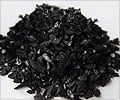Voters are more likely to be subconsciously swayed to elect candidates with whom they have common facial similarities, reveals a new study.
The study was conducted by Jeremy Bailenson, an assistant professor of communication, and Shanto Iyengar, the Harry and Norman Chandler Professor in Communication.In three experiments, the researchers and their graduate students worked with cheap, easy-to-use computer software to morph pictures of about 600 test subjects with photos of politicians.
And they kept coming up with the same results: For the would-be voters who weren't very familiar with the candidates or in perfect lockstep with their positions or political parties, the facial similarity was enough to clinch their votes.
"The big finding No. 1 is that when we do this, no one has any conscious, explicit idea that it's going on. The second big finding is that despite the fact they don't consciously detect these processes, it affects their behavior. When the candidate looks more like you, you are more likely to vote for that candidate," Science Daily quoted Bailenson, as saying.
The first experiment was conducted about a week before the 2004 presidential election with a group of 240 potential voters.
The test subjects, who had no idea what the experiment was about, were split into three groups and shown pictures of incumbent President George Bush and his challenger, Sen. John Kerry.
Advertisement
The doctored photos blended 40 percent of the test subjects' facial features with 60 percent of the candidates' natural looks-a ratio the researchers.
Advertisement
Those who looked at the real photos said they would vote for Bush over Kerry by 46 to 44 percent, predicting the same two-point spread that marked Bush's victory in the actual election.
When the other groups examined the morphed photos, the gap grew markedly.
Those who had their photos combined with Bush gave the Republican a 13-point victory, while those blended with Kerry gave the Democrat a 7-point advantage.
"The outcome of this election among our sample was decided not on the issues or the character of John Kerry or George Bush, but based on how similar the image of Bush or Kerry was to the voter," Bailenson said.
The study will be published in the December issue of Public Opinion Quarterly.
Source-ANI
TAN/L










